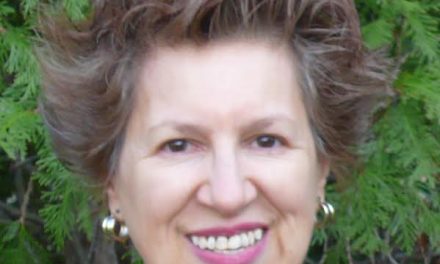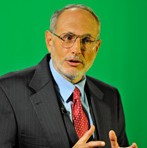By Kumar Balani
NEW YORK, NY – In Boston, it takes over two months to see a primary care physician, sometimes a first stop for people before consulting a specialist. When you’re referred to a cardiologist, dermatologist, gynecologist-obstetrician, or orthopedic surgeon, your earliest appointment would on average still be about a month and a half from the day you call, and 72 days to see a dermatologist there! You’d be better off in San Diego or Miami, but Dallas is your best bet, where you can see a general practitioner in five days, and a specialist in 10 days.
These waiting periods from the Association of American Medical Colleges (AAMC) cited by Lenny Bernstein in a March 3, 2015 Washington Post article entitled U.S. Faces 90,000 Doctor Shortage by 2025, Medical School Association Warns, have likely become longer today for healthcare consumers, as demand for doctors continues to outpaces supply.
One reason for this is a growing population of aging people in the US, who are now not only living longer – 82 years for women and 77 for men (compared to 72 years for women and 65 for men in the Philippines per 2015 World Health Organization figures). They are also more likely to have chronic diseases and need diagnosis and treatment.
A second factor is that more people want to avail of newly-discovered treatments for various ailments, diseases, and disorders that are constantly being found, with advances in medical research. New imaging and disease-detection technologies have also enabled people to get treatment to live longer.
For example, Dr. Gilbert L. Raff, director of Advanced Cardiovascular Imaging in Rochester, Michigan, in his Foreword to the book Diagnostic Imaging: Cardiovascular writes that imaging as a diagnostic tool has grown in use extensively in medicine in general, but more so in cardiology in particular.
Two relatively newer types of imaging – computed tomography (CT) and cardiac magnetic resonance (CMR) – are now widely available, with expanded use, flexibility, and popularity. Read the review of this book here: http://www.bizindia.net/book-review-diagnostic-imaging-cardiovascular-2nd-edition to compare CT and CMR with traditional imaging methods cardiologists use to check out your heart.
A third cause of the demand-exceeding-supply (and distribution) situation is that sick people in rural communities are not being adequately served, as doctors prefer to practice in large cities.
There were about 950,000 practicing physicians in the US in 2016, according to the FMSB
(Federation of State Medical Boards) and a 2017 report from Statista indicated that the number of US doctors had increased to 1,030,000. With US population now at 330 million, this works out to one doctor per 330 people.
The FMSB report showed that 76 percent or almost 783,000 had obtained an MD degree from a US medical college, and nearly two-thirds were male. The other 24 percent of US doctors or 247,000 of them had MD degrees from other countries, including around 155,000 Indian doctors. Some Indian doctors however, were born in the US (it’s not known how many; medical colleges don’t check ethnicity). The balance 92,000 are from other countries, including the Philippines.
Doctors in the US are doing well financially. A 2011 survey of 455,000 US physicians by Medscape showed those who earned the most were located in the North Central region comprising the states of Iowa, Kansas, Nebraska, Missouri, North Dakota and South Dakota, with an annual median salary of $225,000. The second highest–earning physicians, making $216,000 a year, were in Arkansas, Oklahoma, and Texas – states of the South Central region.
Specialist doctors make more money, with their advanced, deeper studies of the anatomy, physiology, and various other aspects of a particular area of the human body. They also go through a fellowship after their residency. A 2014 Medscape survey of 19,600 specialists in 26 fields found that the average specialist’s compensation was $284,000, compared to primary care physicians who made $195,000.
With such high income, disciplined and regular savings, frugal living habits, and highly tax-efficient investments in low-risk, high-return equities using the strategies of billionaire value investor Warren Buffett for example, you can become a millionaire in just a few years.
Doctors are among the most richly compensated professionals in the US today, but they work hard and long, with over three quarters of them spending between 40 and 60 hours a week in their jobs, and nearly one-quarter of them have a workweek of between 61 and 80 hours, according to a 2014 study by the American Medical Association.
With growing demand, one would expect that MD degree holders from outside the United States would obtain residency positions in various specialties at hospitals without much difficulty. But the reality is that it is not easy today for a foreign-educated MD degree holder to do that, and this has not changed for decades, despite the growing overall shortage of physicians in the US.
When doctors (both non-immigrant visa holders and legal permanent residents) do get residency positions at US hospitals, they are typically not in higher-paying specialties. Unless you have acquired superior and deep, detailed knowledge in a medical specialty, gone through
a review course and obtained a very high score in an exam for that specialty, you are unlikely to get a residency in the top fields we list below.
The 2016 Medscape physician compensation report shows these specialists had the highest earnings in that year:
- Orthopedists – $443,000
- Cardiologists – $410,000
- Dermatologists – $381,000
- Gastroenterologists – $380,000
- Radiologists – $375,000
- Urologists – $367,000
- Anesthesiologists – $360,000
- Plastic Surgeons – $355,000
- Oncologists – $329,000
- General Surgeons – $322,000
Among the 26 specialties surveyed, the lowest-earning specialty was pediatrics, with an average compensation of $204,000.
The hurdles for foreign doctors are high. In a November 18, 2014 article by Philip Sopher in the magazine Atlantic entitled Doctors With Borders: How the U.S. Shuts Out Foreign Physicians, he writes: “MDs trained overseas must go through an often prohibitively difficult, time-consuming process.” He lays out the process which involves, among many other smaller steps, the following:
- Obtain an entry visa from a US consulate in your country of origin
- Prepare for and pass the first two steps of the US Medical Licensing Exam (USMLE)
- Become certified by the Education Commission for Foreign Medical Graduates (ECFMG)
- Get into an accredited US hospital’s residency program in the specialty of your choice
- Go back and pass step three of the USMLE which provides questions on your specialty
Going through some of these steps could take many months, and others, several years. But once you get started, gather the necessary knowledge and experience, and get through each stage well, you will build confidence, and your goal will appear in sight, much, much closer than at the beginning of your journey!
Read Part 2 in the Sunday, Sept. 23 issue: Keys to Getting the Medical Residency You Desire
Kumar (Kem) Balani has a dual background in business and journalism. He owns a company that previously exported American brand-name products to the Far East. He is founder and currently publisher of BIZ INDIA Online News (www.BizIndia.net) that followed the print publication BIZ INDIA Magazine begun in 2002. He lived in Manila from 1960 to 1974, obtaining an AB Journalism degree from the University of the Philippines at Diliman in 1972. He then got an MA in International Politics in 1977 from New York University.
This article first appeared on Sunday, September 16, 2018 in the Daily Tribune in the Philippines. Click here to view it: http://tribune.net.ph/index.php/2018/09/16/sunday-16-september-2018/







